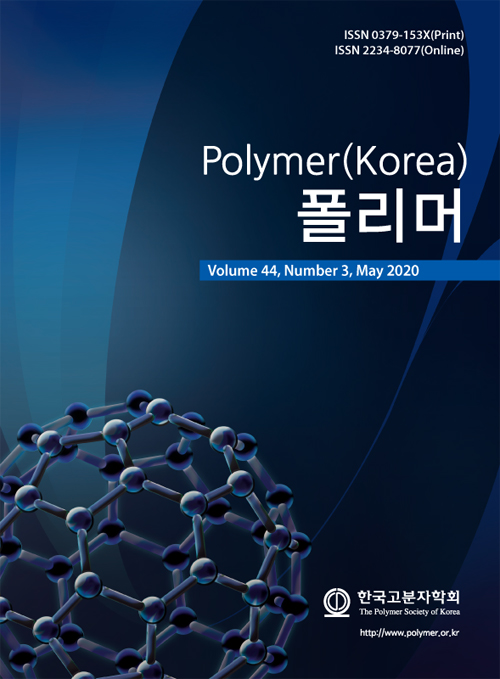- Study of Vibration Weld Strength Depending on Blowing Ratio and Welding Conditions in Polypropylene Foam
Chanhyeok Um, Jin Uk Ha, Sun Kyoung Jeoung, Jae Yong Lee*, Kwang Sup Kim*, Hyung Tak Lee**, and Pyoung-Chan Lee†

Materials Technology R&D Division, Korea Automotive Technology Institute, Dongnam-gu, Cheonan-si, Chungnam 31214, Korea
*R&D Center, Dukyang Ind. Co. Ltd., 105, Gwanggyo-ro, Yeongtong-gu, Suwon-si, Gyeonggido 16229, Korea
**Polymer R&D Team, GSCaltex Co. Ltd., Yusung-gu, Deajeon 34122, Korea- 발포 폴리프로필렌의 진동융착 강도에 관한 연구
한국자동차연구원 소재기술연구본부, *㈜덕양산업 선행사업실, **㈜GS칼텍스 폴리머기술개발팀
In this study, vibration weld
strength of polypropylene (PP) foam was investigated under various blowing
ratio and welding conditions. As a result, the size of foam cell increased with
increasing blowing ratio of PP foam materials, resulting in the decreased
density of the PP foam materials. Furthermore, the PP foam materials provided a
68% increment of the vibration weld strength. This is attributed to the
enhanced physical anchor property due to the physical impregnation into foam
cell during the vibration welding. At a high blowing ratio of PP foam, the
vibration weld strength tended to decrease compared to the unfoamed material.
본 연구에서는 발포율 및 진동 융착 조건에 따른 폴리프로필렌(PP) 발포 소재의 진동 융착 특성을 연구하였다. 폴리프로필렌 발포
소재의 발포율이 증가할수록 발포 셀 크기가 증가하며, 이로 인해 발포 소재의 밀도는 감소하는 것을 확인하였다. 폴리프로필렌 발포 소재의 발포율 및 진동 융착 조건에 따른 융착 강도를 분석한 결과, 발포율이 증가할수록 융착 강도가 미발포 소재 대비 최대 68%까지
증가하는 것을 확인하였다. 이는 진동 융착 시 발포소재가 용융되면서 발포 셀 내로 침투하여 강화된 물리적인
앵커 효과로 설명할 수 있다. 하지만, 과도한 발포 조건
하에서는 융착 강도가 미발포 소재 대비 감소하는 경향도 나타내었다.
Keywords: polypropylene foam, vibration welding, blowing ratio, lightweight, automotive
- Polymer(Korea) 폴리머
- Frequency : Bimonthly(odd)
ISSN 0379-153X(Print)
ISSN 2234-8077(Online)
Abbr. Polym. Korea - 2023 Impact Factor : 0.4
- Indexed in SCIE
 This Article
This Article
-
2020; 44(3): 364-368
Published online May 25, 2020
- 10.7317/pk.2020.44.3.364
- Received on Feb 8, 2020
- Revised on Feb 26, 2020
- Accepted on Mar 3, 2020
 Correspondence to
Correspondence to
- Pyoung-Chan Lee
-
Materials Technology R&D Division, Korea Automotive Technology Institute, Dongnam-gu, Cheonan-si, Chungnam 31214, Korea
- E-mail: pclee@katech.re.kr









 Copyright(c) The Polymer Society of Korea. All right reserved.
Copyright(c) The Polymer Society of Korea. All right reserved.